The Village des Bories is an open-air museum and the largest concentration of preserved 'bories' in the region. ‘Bories’, or ‘dorbies’ as I accidentally referred to them more than once, are dry-stone constructions that can range from being a small, temporary shelter for a shepherd to a contiguous set of rooms that together make up a rudimentary farm house. Haute-Provence ("Upper Provence) is covered with innumerable stone constructions ranging from city walls, sheepfolds, roman and medieval monuments and aqueducts to entire villages.
The bories are unique because of their dry-stone technique (i.e. no mortar) and because of the general mystery surrounding their origins. The group of dwellings at Gordes, restored between 1969 and 1976, are considered to be among the most spectacular in Provence. These constructions required a considerable amount of stone, most of which was probably gathered on site. Up till now, we had seen a few bories from a distance and it was fascinating to be able to go into them and see the construction up close. That’s when you realize that this type of construction would have taken considerable skill; to build without an arch or a scaffold, to construct false corbelled vaults and only with the help of a hammer. In fact, up to the 20th century, there were many masons in Provence that were specialised in dry stone constructions. Archaeologists and ethnologists have hypothesized that stand-alone bories were used for temporary shelters, lofts or stores for agricultural tools.
When there are multiple huts huddled together however, they seem to form groups of farms, hamlets and even villages. The dwellings are rustic and may include a bench that doubled as beds, alcoves, cupboards and chimneys. The bories that housed livestock were also sometimes equipped with barns, lofts and pigsties The bories that form the museum are believed to have been constructed between the 14th and 18th centuries and inhabited till about the mid-19th century. Even though the nearby town of Gordes was a well-established town at that time, clearly there were people who chose to live a more rural lifestyle.
We visited a number of buildings including the sheep-pen, wine-cistern, goat-pen, oven, barn and silkworm rearing house. Some of the living quarters had been refurnished with typical pottery from the time and it was very evident that it was a simple lifestyle that depended heavily on agriculture. The area surrounding the bories would have been planted with olive and almond trees and the wild lavender, sage and flowers would have been good for raising bees. What we found most striking was the amount of work that would’ve gone into building one of these dwellings seemed to far outweigh the floor space gained.
Some of the roofs peaked at probably six to seven meters high and yet the building inside was probably only a few square meters big. The insides of some of the bories were covered in soot and one could imagine that ventilation in these buildings would have been less than ideal. Seeing the communal oven made entirely out of stone was a highlight, too. Some of the buildings had wooden doors on them and I thought that how doors were “hinged" so that they could swing open was very clever. We also got to see some of the rudimentary farming equipment that would have been used at the time and also a few bee hives, which were just simply hollowed out logs.
When you looked closely at the stones and how they were stacked to achieve a stable structure, you realized the thousands of hours that must have gone into each construction and how it must have been like a giant puzzle trying to find the proper next stone. This led me to think that Megs could probably be a good builder given her superior jigsaw puzzling skills. We all really enjoyed the museum and after we had sufficiently poked around all the buildings and wandered around the outsides, too, we headed on to our next destination, the village of Menerbes.
Menerbes was a sleepy little village until it was discovered that it was the one Peter Mayle lived in when he wrote his famous book, “A Year in Provence”. We were expecting it to be packed full of tourists like Les Baux had been and surprisingly, it was quite quiet or maybe we just hit it on an off day. It was quite a picturesque village and being built on a hill side, it had some excellent view points over the surrounding countryside. I was quite busy taking photos of the various houses, shutters, doors and lanes as we wandered up and down the steep streets.
I can’t quite pinpoint what attracts me to old doors, knockers and colourful shutters but I’m always keeping an eye out for an interesting one. We’ve also found that looking for these little details in every town we visit forces to walk a bit slower and take in the town in a little more detail. One house in particular stood out because it had an amazing arch of jasmine about a meter thick and three to four meters in length. The arch was still a work in progress but it already looked amazing. At one of the viewpoints, we spotted an interesting looking measuring scale. One side was attached to a high wall, and the other to the low wall of the balcony of the viewpoint. We guessed that it was there to measure how much the two walls were separating but since there were no signs around or caution warnings, I figured it was still safe to be standing on the balcony. Menerbes seems to be split into two halves, separated by the main road through town.
We walked up one side first and then up the other and when we felt we had sufficiently seen the village, we drove out along a road that should have taken us past a memorial to the resistance that Sheahan was keen on seeing but we never did end up finding it. We continued on the road and we’re pretty sure we spotted the old house that Peter Mayle fixed up, lived in and wrote about in his book. He no longer lives there after someone pieced together where the house in the novel was located and it became a bit of a tourist attraction. Although all three of us really enjoyed his books, we were content to just take a picture as we drove by and not drive up close to the house.
Our final stop of the day was the tiny village of Lacoste and since were driving right through it to get to Gordes, I suggested we stop and walk up to the castle at the top for a view of the town of Bonnieux. It was a charming little village and the walk up to the citadel was along a steep and slippery cobblestone street. Lacoste is infamous because of one its residents, the Marquis de Sade (1740-1814). He lived in this castle for more than 30 years and was the author of dirty novels and is notorious for kidnapping peasants for scandalous purposes.
He was eventually arrested and imprisoned for 30 years and it is from him that we have the word sadism. Today, fashion designer Pierre Cardin owns the castle. We were not fortunate enough to get a glimpse of Pierre but we did get a fantastic view over the countryside and of Bonnieux. There was also a very strange looking sculpture that had been donated (I could never guess why anyone would part with it!) to the town. I really can’t describe this work of “art” other than to say it was a pair of outstretched arms, that looked like a sausage as Meghan put it. On the way back down through town, we took the same path but this time stopped to admire the bell tower, which we had a unique perspective on because we were level with it.
Many of the bell towers in Provence that we’ve seen are not enclosed and just have a simple, metal frame supporting them and I’m not sure why they were designed in this manner. On our drive back to Gordes, we passed by a house that had an extremely picturesque driveway lined with lavender, olive and cypress trees and we couldn’t resist stopping for a few quick photos. We finally made it back to camp around half past six. The running joke has been that we plan for a short day covering one sight which invariably turns into six to nine hours of touring and multiple sights. Today was definitely just another short day in Provence.
Village des Bories, Menerbes and Lacoste
Tuesday, June 25, 2013
 Menerbes, Provence, France
Menerbes, Provence, France
Other Entries
-
146Artist Village of Pont Aven
May 2531 days prior Pont-Aven, Francephoto_camera8videocam 0comment 0
Pont-Aven, Francephoto_camera8videocam 0comment 0 -
147A relaxing day in Quiberon
May 2630 days prior Quiberon, Francephoto_camera15videocam 0comment 0
Quiberon, Francephoto_camera15videocam 0comment 0 -
148Megaliths and Thundershowers
May 2828 days prior Vannes, Francephoto_camera35videocam 0comment 0
Vannes, Francephoto_camera35videocam 0comment 0 -
149Marais Poitevin
Jun 0124 days prior Saint-Hilaire-la-Palud, Francephoto_camera45videocam 1comment 0
Saint-Hilaire-la-Palud, Francephoto_camera45videocam 1comment 0 -
150Ile de Ré
Jun 0322 days prior Saint-Martin-de-Ré, Francephoto_camera45videocam 0comment 0
Saint-Martin-de-Ré, Francephoto_camera45videocam 0comment 0 -
151Exploring around Royan
Jun 0619 days prior Royan, Francephoto_camera97videocam 0comment 0
Royan, Francephoto_camera97videocam 0comment 0 -
152Sarlat Market, a third visit
Jun 0817 days prior Sarlat-la-Canéda, Francephoto_camera50videocam 0comment 0
Sarlat-la-Canéda, Francephoto_camera50videocam 0comment 0 -
153Saint-Cirq-Lapopie and the Cuzals farm museum
Jun 0916 days prior Saint-Cirq-Lapopie, Francephoto_camera93videocam 3comment 0
Saint-Cirq-Lapopie, Francephoto_camera93videocam 3comment 0 -
154Millau Viaduct and the Roquefort Caves
Jun 1015 days prior Millau, Francephoto_camera37videocam 0comment 0
Millau, Francephoto_camera37videocam 0comment 0 -
155Scenic Drives, Views and Caves near Meyrueis
Jun 1411 days prior Meyrueis, Francephoto_camera164videocam 3comment 0
Meyrueis, Francephoto_camera164videocam 3comment 0 -
156Commuting to the Camargue
Jun 169 days prior Saliers par Arles, Francephoto_camera85videocam 0comment 2
Saliers par Arles, Francephoto_camera85videocam 0comment 2 -
157Exploring the Chateau in Les Baux
Jun 178 days prior Les Baux de Provence, Francephoto_camera55videocam 0comment 1
Les Baux de Provence, Francephoto_camera55videocam 0comment 1 -
158Perched Village of Gordes
Jun 205 days prior Gordes, Francephoto_camera45videocam 0comment 0
Gordes, Francephoto_camera45videocam 0comment 0 -
159Great Market, Incredible Ice Cream & Amazing Views
Jun 214 days prior Lourmarin, Francephoto_camera42videocam 0comment 0
Lourmarin, Francephoto_camera42videocam 0comment 0 -
160Ochre Quarry in Roussillon
Jun 223 days prior Roussillon, Francephoto_camera77videocam 0comment 0
Roussillon, Francephoto_camera77videocam 0comment 0 -
161Sunday Market and Waterwheels
Jun 232 days prior L'Isle-sur-la-Sorgue, Francephoto_camera36videocam 0comment 0
L'Isle-sur-la-Sorgue, Francephoto_camera36videocam 0comment 0 -
162Fontaine de Vaucluse
Jun 241 day prior Fontaine de Vaucluse, Francephoto_camera52videocam 1comment 0
Fontaine de Vaucluse, Francephoto_camera52videocam 1comment 0 -
163Village des Bories, Menerbes and Lacoste
Jun 25 Menerbes, Francephoto_camera51videocam 0comment 0
Menerbes, Francephoto_camera51videocam 0comment 0 -
164Sault, Gorge de la Nesque & Mont Ventoux
Jun 261 day later Sault, Francephoto_camera42videocam 0comment 0
Sault, Francephoto_camera42videocam 0comment 0 -
165Seguret
Jun 272 days later Seguret, Francephoto_camera24videocam 0comment 0
Seguret, Francephoto_camera24videocam 0comment 0 -
166Venasque & a Return to Isle sur Sorgue
Jun 283 days later L'Isle-sur-la-Sorgue, Francephoto_camera37videocam 0comment 0
L'Isle-sur-la-Sorgue, Francephoto_camera37videocam 0comment 0 -
167Pernes-les-Fontaines
Jun 294 days later Pernes-les-Fontaines, Francephoto_camera29videocam 1comment 3
Pernes-les-Fontaines, Francephoto_camera29videocam 1comment 3 -
168The Tour de France speeds by
Jul 049 days later Maussane-les-Alpilles, Francephoto_camera33videocam 1comment 0
Maussane-les-Alpilles, Francephoto_camera33videocam 1comment 0 -
169Hiking in the Alpilles
Jul 0510 days later Maussane-les-Alpilles, Francephoto_camera17videocam 0comment 0
Maussane-les-Alpilles, Francephoto_camera17videocam 0comment 0 -
170Colorado Provencal
Jul 0712 days later Rustrel, Francephoto_camera28videocam 0comment 4
Rustrel, Francephoto_camera28videocam 0comment 4 -
171Abbaye de Valsaintes & Simiane-la-Rotonde
Jul 0813 days later Simiane-la-Rotonde, Francephoto_camera57videocam 0comment 0
Simiane-la-Rotonde, Francephoto_camera57videocam 0comment 0 -
172Exploring the Verdon Gorge
Jul 1217 days later Moustiers Sainte-Marie, Francephoto_camera97videocam 1comment 0
Moustiers Sainte-Marie, Francephoto_camera97videocam 1comment 0 -
173Lavender on the Valensole Plateau
Jul 1318 days later Valensole, Francephoto_camera48videocam 1comment 0
Valensole, Francephoto_camera48videocam 1comment 0 -
174Forcalquier
Jul 1621 days later Forcalquier, Francephoto_camera69videocam 1comment 0
Forcalquier, Francephoto_camera69videocam 1comment 0 -
175Hot Air Ballooning and the Bastide St. Georges
Jul 1823 days later Forcalquier, Francephoto_camera119videocam 6comment 0
Forcalquier, Francephoto_camera119videocam 6comment 0 -
176Les Aventurières du Goût Cooking Adventures
Jul 2025 days later Brantes, Francephoto_camera87videocam 0comment 0
Brantes, Francephoto_camera87videocam 0comment 0 -
177Lavender fields around Sault
Jul 2126 days later Sault, Francephoto_camera71videocam 1comment 0
Sault, Francephoto_camera71videocam 1comment 0 -
178Market Day in Vaison-la-Romaine
Jul 2328 days later Vaison-la-Romaine, Francephoto_camera30videocam 0comment 0
Vaison-la-Romaine, Francephoto_camera30videocam 0comment 0 -
179Market in Malaucene and Drive to Beaune
Jul 2429 days later Malaucene, Francephoto_camera21videocam 0comment 0
Malaucene, Francephoto_camera21videocam 0comment 0 -
180Return to Beaune and on to Amiens
Jul 2530 days later Beaune, Francephoto_camera40videocam 0comment 0
Beaune, Francephoto_camera40videocam 0comment 0 -
181Floating Gardens in Amiens
Jul 2833 days later Amiens, Francephoto_camera110videocam 1comment 0
Amiens, Francephoto_camera110videocam 1comment 0

 Menerbes, Provence, France
Menerbes, Provence, France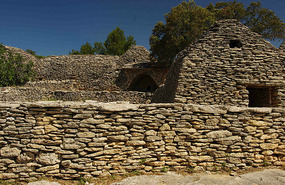
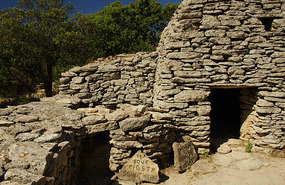
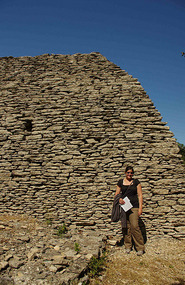
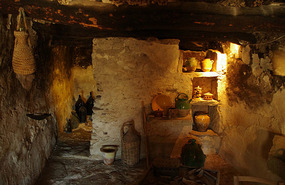
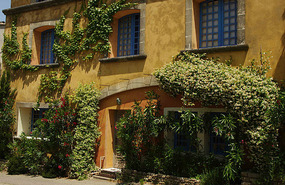
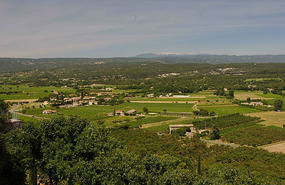
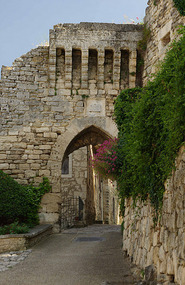
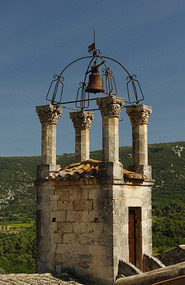












































2025-05-22